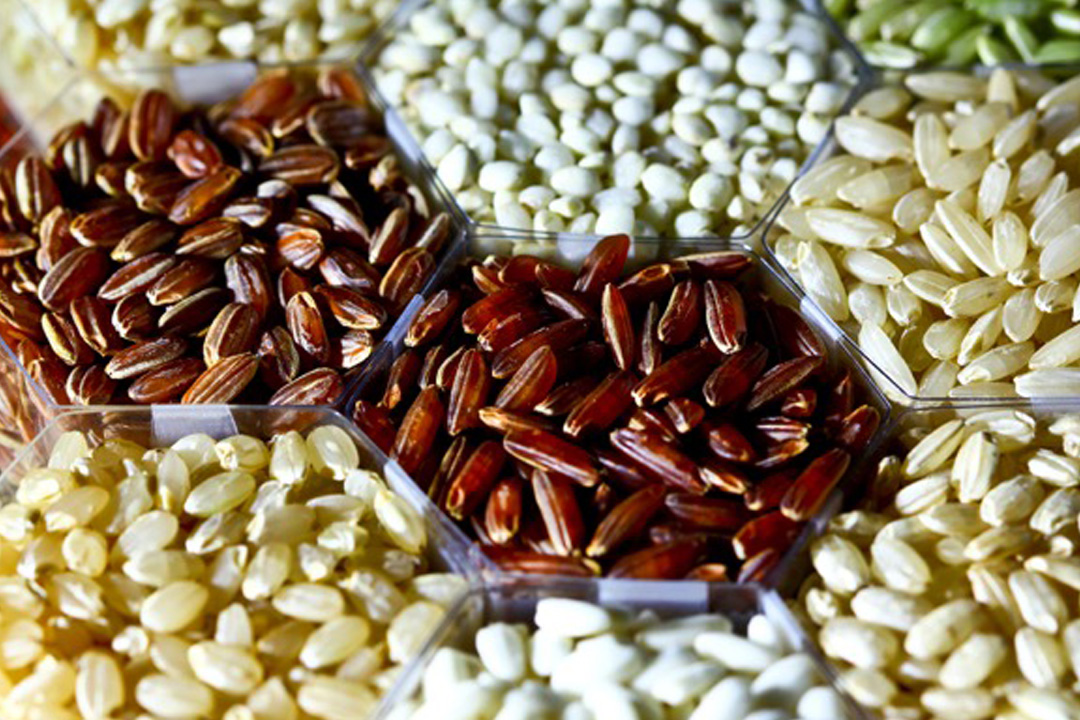
Reducing Food Waste in Foodservice
October 16, 2018 by Doreen Garelick, Dietetic Intern
Our intern Doreen attended a food waste summit for restaurants and compiled these tips to help food service operators redirect…
March 24, 2016

In the second part of her series on the future of food, Julianka Bell explores some implications of this increase in popularity and offers some new grains to expand your repertoire.
Alas, ancient grains are making a comeback. Farmers are introducing new varieties to their grain portfolios. Chefs are challenging diners to explore grains in a whole new manner (think buckwheat pasta). And grocery store grain aisles are getting an upgrade now that consumers are on the hunt for the next super grain.
Take the case of quinoa. In recent years, the high protein, gluten-free grain has seen a surge in sales in the United States. Its appeal is immense. In fact, it’s so nutritionally complete that it has been approved for space by NASA. And in 2013, the Food and Agriculture Organization of the United Nations (FAO) declared 2013 the International Year of Quinoa.
But, quinoa is complicated. Its popularity boost has its own fair share of disadvantages. Although the escalating prices have boosted farmers’ income, locals are consuming less of the staple and farmers are scrambling for new land to cultivate to meet demand.
As the challenges of sustainably feeding a growing population continue to increase, a range of experts from different fields are rising to the challenge of finding more sustainable grains along the way. If grains supply more than half of the world’s energy, then perhaps diversifying the local food grain system can alleviate the problem and encourage new and better standards in farming.
As consumers, you can help by trying new grains. Below is a glimpse of 5 grains that show great promise for the future:
1) Amaranth
2) Freekeh
3) Millet
4) Sorghum
5) Teff

October 16, 2018 by Doreen Garelick, Dietetic Intern
Our intern Doreen attended a food waste summit for restaurants and compiled these tips to help food service operators redirect food waste from landfills.
Nutrition 101

Nutrition 101
September 26, 2018 by Doreen Garelick, Dietetic Intern
Ever notice headlines about rapid weightloss? Dietetic Intern Doreen Garelick looks deeper into a recent eye-catching headline to see if there's any truth behind it.
Connect
 Follow us on Twitter
Follow us on Twitter Friend us on Facebook
Friend us on Facebook Follow us on Pinterest
Follow us on Pinterest Follow us on Instagram
Follow us on Instagram Read our Blog
Read our Blog Watch videos on YouTube
Watch videos on YouTube Watch videos on Vimeo
Watch videos on Vimeo Connect with us on Linkedin
Connect with us on Linkedin Find us on Foursquare
Find us on Foursquare
Tweets by @SPEcertifiedBlog Search
Categories
SPE Certified Newsletter
Sign up for news on the latest SPE-certified venues, events and SPE updates.
We will never share your personal information with a third party.